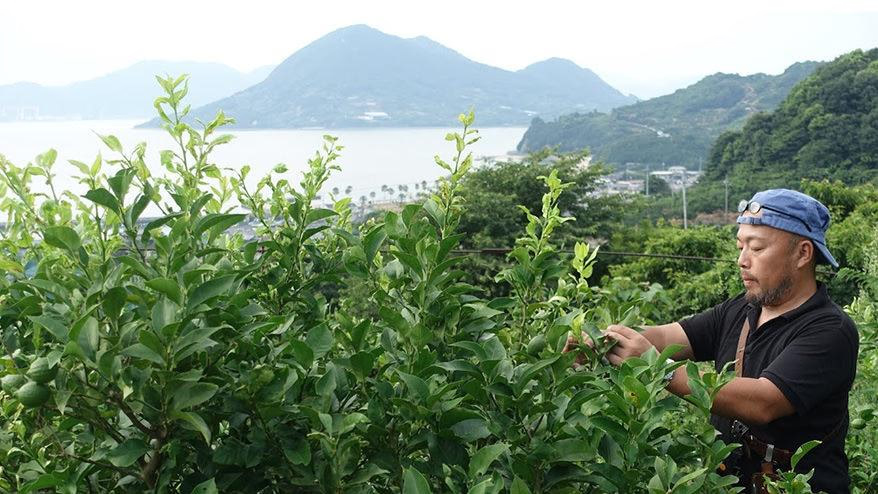はじめまして、プロデュース部の畠中です。
モノサスに入社し3ヶ月。
入社より、モノサス プロデュース部として Google でのプロジェクト(Google 主催のイベントや制作物のディレクションなど)に関わらせて頂いているのですが、そんな私に流星の如く舞い込んだのが、広島は生口島のレモン農家さん「citrus farm たてみち屋」さんの Webサイト制作のお仕事。
今日はその取材に伺った時のお話をしたいと思います。
農業はサイエンス
自然にレモンが育つ仕組みを正しく認識する
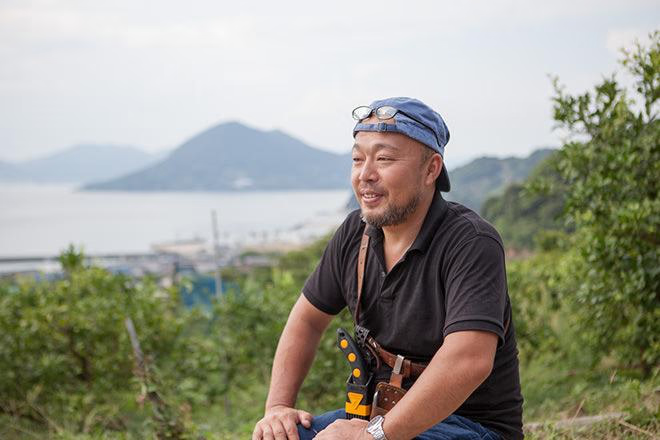
今回取材をさせていただいた、広島県生口島の「citrusfarms たてみち屋」 園主の菅 秀和さん。
農業を営む上で「身土不二(しんどふじ)」という言葉の意味を菅さんはこう捉えていると言います。
体と土は同じ働きをする。人間も食べすぎると、太ったり、成人病にかかりやすくなったりしますが、それは木も同じ。美味しく健康的な実をつけてもらうには、適切な栄養供給から木の持つ生命力を強くすることが大事。
健康的に安心安全な木・葉・実を育てるために、何をすべきか?
そこで始めたのが、土のカルテ作りだそう。年 2 回土壌分析をし、土の養分の状態を知ることで必要な栄養素の配合を科学的に算出。適切な分量・配合の栄養素を与え、有用菌の働きを活性化させるような管理をすることで、木が本来持つ生命力を強くする。
そうすることで、農薬や化学肥料のいらいない農業をすることができる。木や実の育て方を感覚で伝えるのではなくデータとして、また1年間の業務をマニュアル化することで、次の世代に効率的で安定的な農業経営を伝えていける。後継者問題や耕作放棄地の問題の解決作としても「サイエンス」を用いた農業は有用であると言います。
とても私的な意見ですが、これまで農業はまだまだ昔のスタイルを残す過酷な労働。それでも食べていけるかどうか、そんなイメージが強くありました。今回の取材を通し、これからの世代に一次産業には可能性がまだまだある、面白い仕事なんだということを伝えていきたいという菅さんの想いが、私自身の農業の価値観を大きく変えました。
レモン作りを通して本当に伝えたいこと
食を育てるつもりで、食を学ぶ
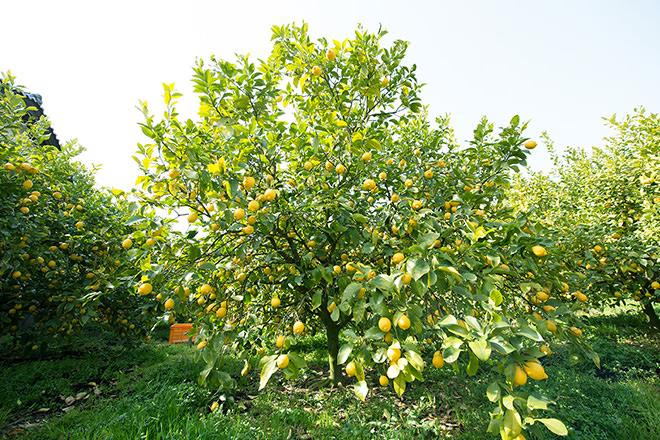
実がぷっくりと育った3月のレモンの木。
先にお話した通り、無農薬で作物を育てるのは、科学的な知見や経験がない限り仕事としてやっていくには大変なこと。(そのため菅さんは次の世代のためにデータ化の取り組みをしているわけです)
そんな中なぜ茨の道、農薬を使わずにレモンを作ろうと思ったのか。
昔は「美味しい」も「安心安全」も同じだった。なぜそうではなくなったのか、それは農協や農薬メーカーのせいだけではなく、自ら選んで食べている人たちにもその一因はある。
と菅さんは言います。
需要が増え、同一規格農作物の安定供給をするために、大規模市場流通に沿った農業生産の効率化に農薬や化学肥料が使われるようになった、という背景があります。
よくそれを悪として捉えられますが、ただ需要と供給のバランス作用が働いただけのことです。作る人も、売る人も、食べる人もみんなが何が良いのかを自分で選択をすることができなければ、本来の食べ物の味わいを理解することができない。
「食べる」ということはどういうことなのか、自分のモノサシで理解をしてほしい。
安心安全なレモンならではの食べ方や使い方などを、ワークショップを通して伝える活動もしている菅さん(下段の「おまけコーナー」に菅さんの塩レモンレシピも掲載しています)。
『皮も美味しいレモンを通して、食を学び「食べる」ということがどういうことなのかを考えてもらいたい。だから食べて美味しいレモンを作るんだ。』
そう言った菅さんの言葉に、改めて「いただきます」という言葉の意味を考えました。
いただきます。ということば。
食事に携わってくれた方々への感謝。料理を作ってくれた方、野菜や果物、お米を作ってくれた生産者の方々、その食事に携わってくれた方々へ感謝のこころを表しての「いただきます」。
また肉や魚はもちろんですが、野菜や果物にも命があると考え、命を「いただきます」という食材への感謝。命を「いただく」ということは、その命を自分の命にするということ。
分かってはいるものの、豊かな日本で暮らしていると当たり前のように過ごしてしまう「食べる」ということ。「命をいただく」と改めて声に出して考えると、命への感謝はもちろんですが、いただく食材に対する考え方も必然的に変わってくるものだと感じました。まだまだ「食べる」ということがどういうことなのか、自分のモノサシで語れるまでには至りませんが、自分なりに考えていきたいと強く思わせていただいた、そんな尾道取材の旅となりました。
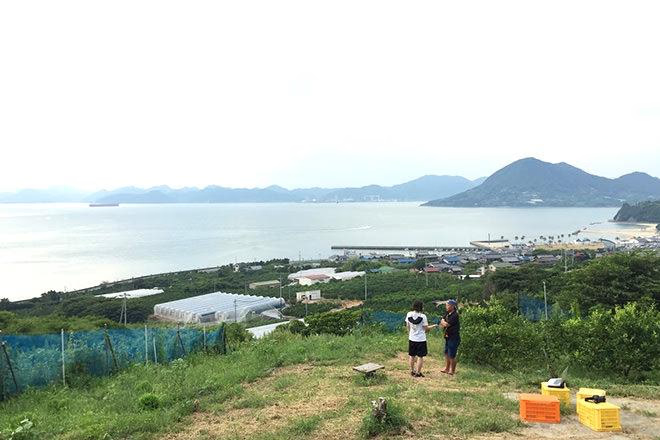
瀬戸内海の海を臨むたてみち屋レモン農園にて
最後に。
菅さんの農業に対する理念や、伝え広めていきたいこと。取材を通して感じたパワーや熱量を、今回私自身改めて考えさせられたようにWebサイトを通してたくさんの方々に知って頂き、自分なりに咀嚼し考え、また新しい世代にまで伝えていくための循環の、第一線のツールとなるようなWebサイトを作って行きたいと思っています。
また滞在期間中、菅さんにご案内いただいた様々なお店で出会った街の方々との交流の中にも、人の縁が広がる出会いがありました。
地域を元気にするために、何ができるのか。その想いを中心に異なる職業の人々が繋がってゆく。社会への繋がり方は人それぞれ、さまざまな方法がある。そんな瞬間を肌で感じました。
今回の取材の旅を通し感じたことのひとつに、Webサイト制作における私自身の社会との関わり方はWebサイトが地域を変える力のひとつも担うことが出来るということです。
おまけ。
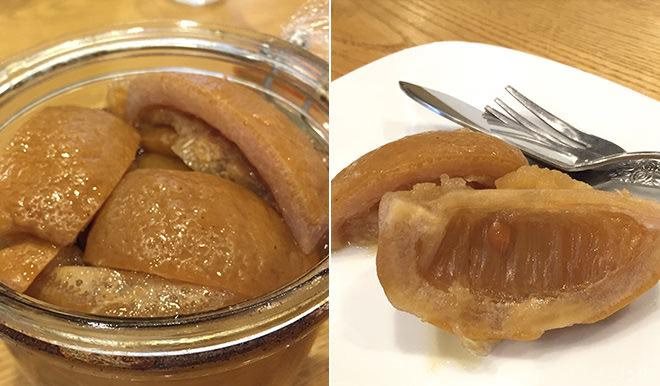
菅さんの漬けた一年物の塩レモン
菅さんに頂いた塩レモン。(レモンの塩漬けです)
これが本当に美味しくて癖になる。
ドレッシングにするもよし、お肉やお魚との愛称もバッチリ。
私達はそのまま頂きましたが、お酒のおつまみに最高だな〜飲みたいな〜なんて思いながらいただいていました笑
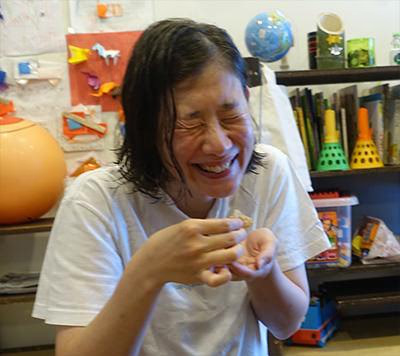
しかもレモンに含まれるクエン酸は糖質の代謝を良くしてくれるらしく、脂肪の分解も助けてくれるらしいです!
作り方を教わったので、良かったら皆さんも是非試してみて下さい。
事前準備
- 保存容器を熱湯消毒する
- レモンをよく洗いしっかり水分を拭き取る
いざ漬ける
- 適当なサイズに切ったレモンを容器に入れ、レモンに対して醤油と同じ濃度である16%の塩を入れる。
- 直射日光を避けた涼しい場所で1ヶ月ほど保存し熟成させる。1日1回レモンを入れた容器をシェイクさせレモンから出た水分を馴染ませる。※果汁に気泡が出るようなら、急激な発酵を抑えるために、瓶の蓋を開けてガス抜きすると良いそうです。
- その後は冷蔵庫で保存。
「citrus farm たてみち屋」出展情報
トマトが赤くなると医者が青くなる青果店 -語り継がれる47都道府県の健康知恵野菜-
会 期 2016年8月11日(木) - 2016年10月16日(日)
時 間 11:00〜20:00(最終入館19:30)
場 所 d47 MUSEUM
料 金 入場無料
事前申込 不要
★ワークショップを10月上旬予定されています。(現在準備中)
展示の詳細はこちら
http://www.hikarie8.com/d47museum/2016/08/--47-.shtml
番外編:プロジェクトを全力で楽しむ?ものさす流 出張スタイル
〜尾道、しまなみ海道サイクリング珍道中〜
菅さんのいる生口島はサイクリストの聖地、しまなみ海道真っ只中。これは自転車で行くっきゃない!と、尾道から生口島まで、約35kmの道のりを自転車で走ってみました。
仕事はもちろん全力、楽しむことも全力。そんな出張スタイルもありなのでは?ということで、番外編としてサイクリング珍道中(?!)をお伝えしたいと思います。
海を望む坂道、点在する寺院
美しい自然と歴史を感じる景観を残す尾道
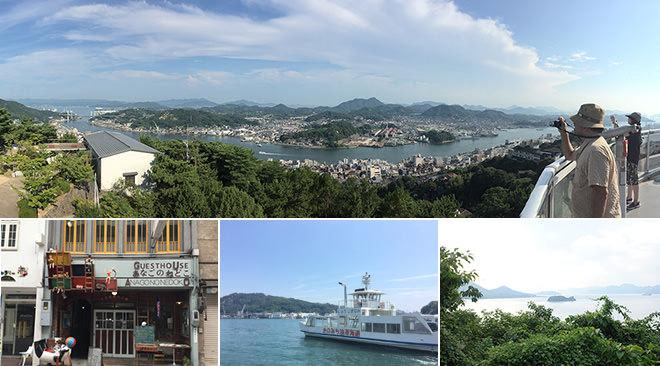
尾道と言えば、有名なしまなみ海道。
美しい景色を見ながらのサイクリングコースはご存知の方も多いのではないでしょうか。
突然ですが、本プロジェクトメンバーのひとりであるプロデュース部の先輩のご実家が愛媛
にあり、尾道から今治まで約 70 km以上を自転車で帰省している、と。
そんな自転車好きの先輩より、今回の取材も尾道から生口島まで自転車で行くけどどう?
と、ちょっと帰りに一杯行っとく?みたいノリでさらっとお誘いをいただきました。
あまりにさらりと言われたもので、軽い気持ちでご一緒しますと返事をしたものの、後日その距離を知り震えたものです。
尾道から生口島のたてみち屋さんまで、しまなみ海道サイクリングの旅スタート!
まずは尾道のレンタサイクルターミナルでクロスバイクを借り、尾道から向島まで渡船に乗って出発地へと向かいます。
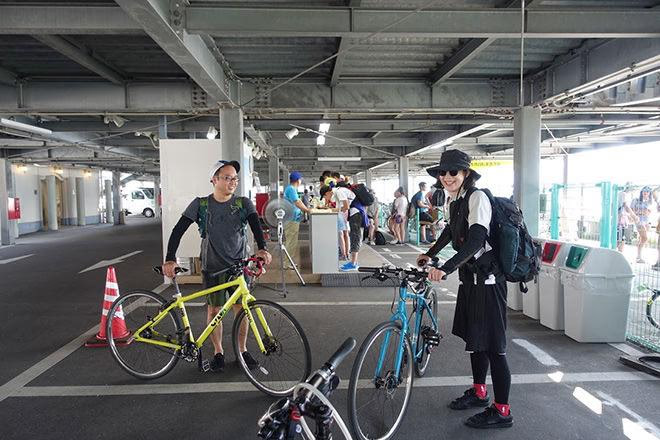
尾道レンタサイクルターミナルでクロスバイクをゲットした山内(左)と私(右)
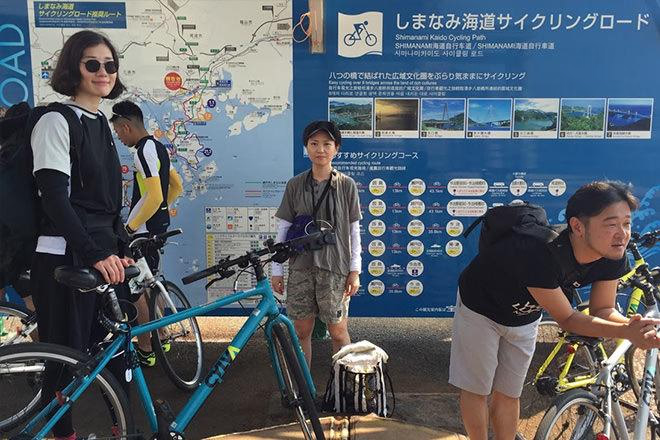
尾道港で向島行きの渡船を待つ私(左)、中庭(真ん中)、竹田(右)
向島から生口島までは2つの橋を越えてゆきます。
遮るものが何もないしまなみ海道。ジリジリと照りつける太陽の光を全身に浴びて、早くも体が沸騰しそうな中、目指すは第一の橋。
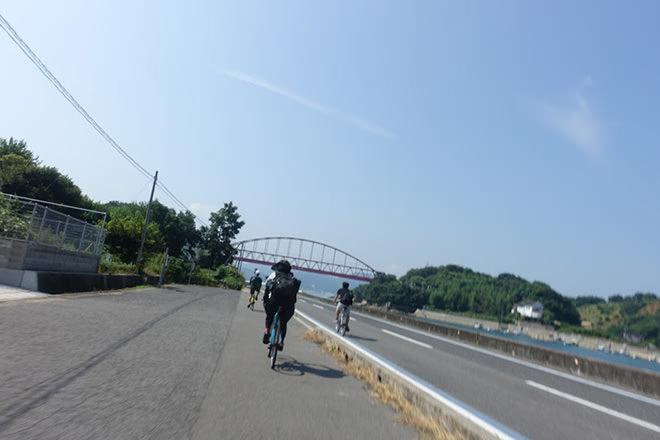
しばらくは平坦な道をひた進む。意外に楽勝で行けちゃうんじゃない?なんて思いながら、第一の橋因島大橋を背にご機嫌に記念撮影。
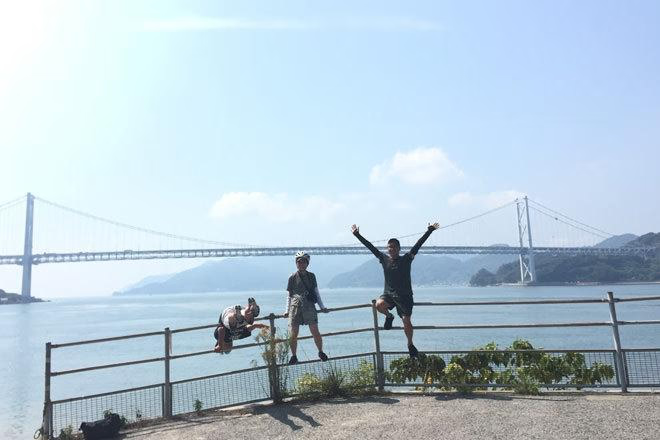
えっ聞いてないよ?この上り坂どこまで続くの?
先ほど記念撮影した因島大橋入り口に向かうための上り坂。
坂を登りきりあともう一歩で因島大橋。心が折れかけた頃に出迎えてくれた、まるで南国のような風景。
一気に疲れが吹き飛びます。
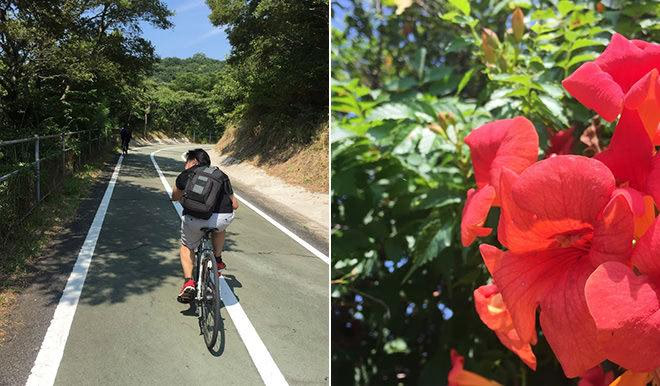
第一の橋 二階建て構造の「因島大橋」( 1,270m )
久方ぶりの日陰!トンネルのように続く道を風をきって突っ走るのは爽快!
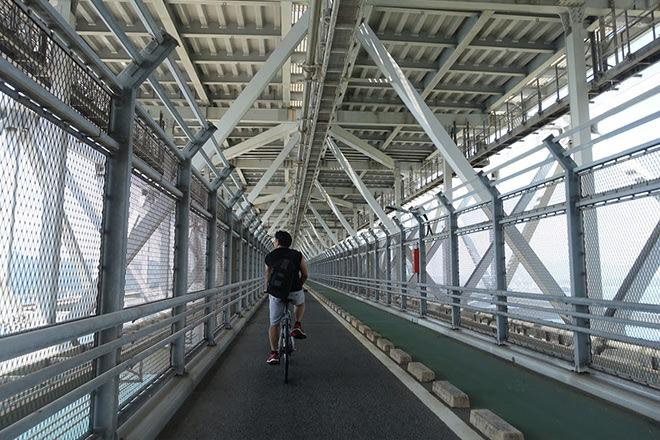
村上水軍ゆかりの地、因島を進んでいくと、目の前に現れるしまなみビーチ。
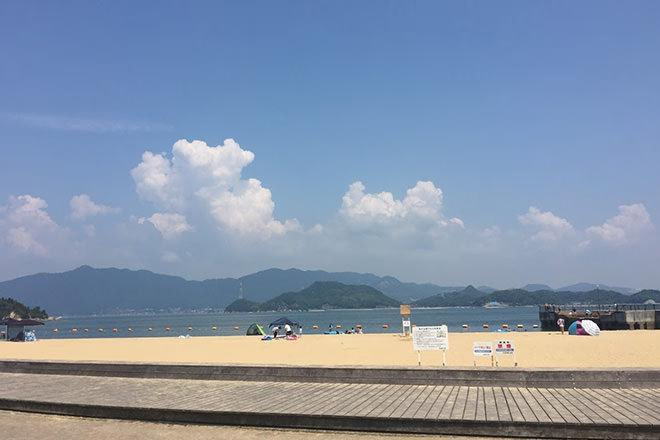
因島から生口橋に向かう上り坂は時間が止まったかのように無限に感じました・・・。
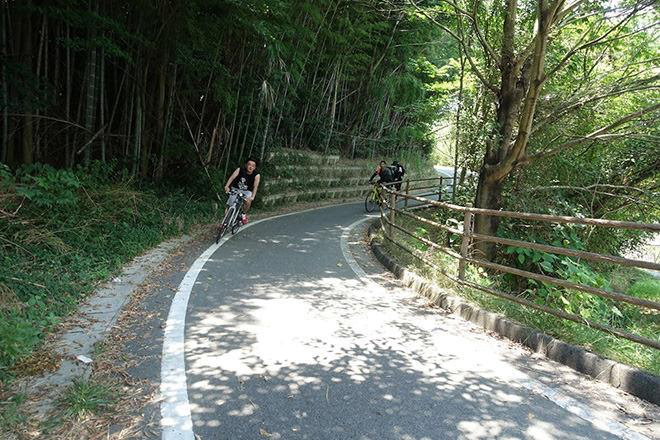
生口橋にあがる地獄の上り坂で自転車を懸命に漕ぐモノサスメンバーたち
林道を疾走した先に見えるのは、第二の橋 スタイリッシュな斜張橋「生口大橋」( 790m )
見渡す限り瀬戸内の海。メンバーみんな自転車を降りて気持ちの良い景色にうっとり。
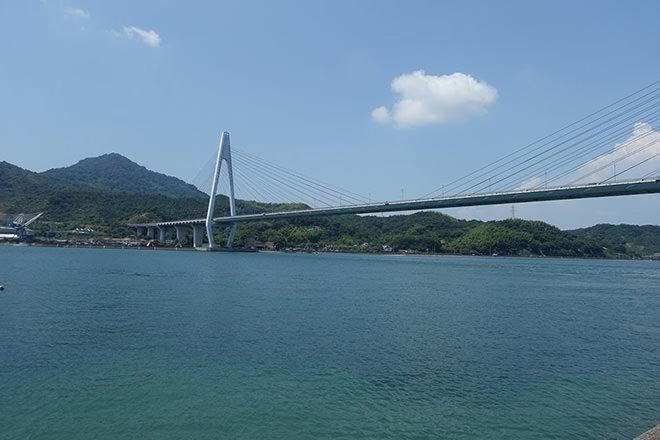
生口大橋を渡りきりついに目的地の生口島に上陸。不思議なオブジェを横目に待っていました手作りジェラート「ドルチェ」。灼熱の太陽の下、30km以上走り火照って疲れた体に瀬戸田の名産レモンジェラートです!
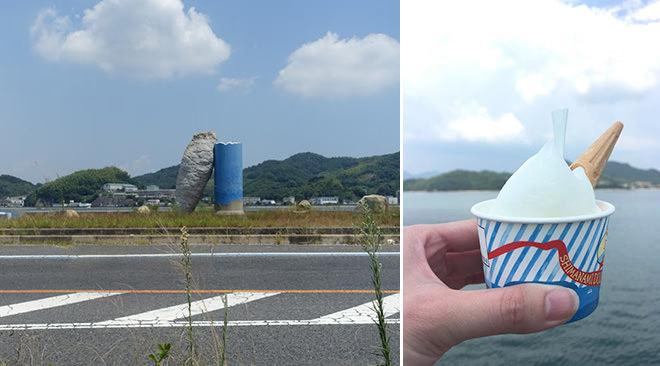
尾道から生口島まで約35km。合間に訪れる登り坂は運動不足の身体には本当にきつい。でもそれ以上に綺麗な景色と充実感に、達成感。この感動は車や電車でピューンと行っていたら感じる事は出来なかった。自転車で走って良かったと痛感。
無事に目的地のレモン農家さん「citrus farm たてみち屋」さんにたどり着きました!
疲れてクタクタな私たちに美味しい塩炭酸水をふるまってくださった菅さん。か〜生き返る!とばかりにゴクゴク飲んで、はりきって取材に臨むことが出来ました。
菅さん、何から何までありがとうございました!
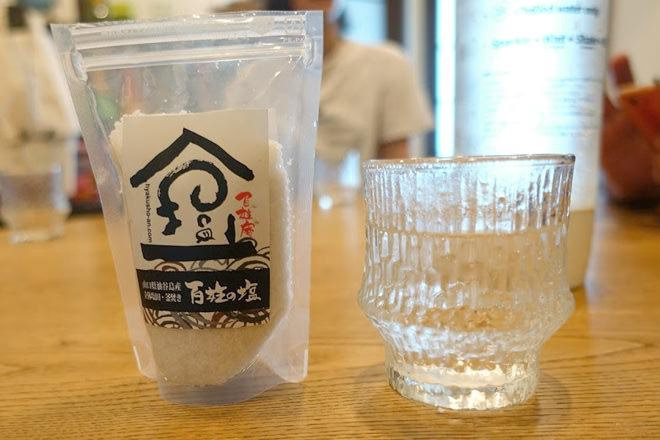
菅さんお手製の塩炭酸水。シュワっとした炭酸で喉を爽快にさせ、汗で不足したナトリウムも補える
